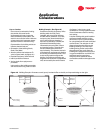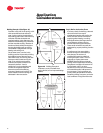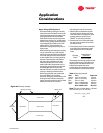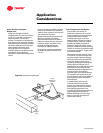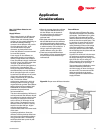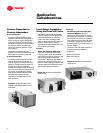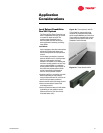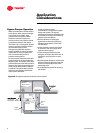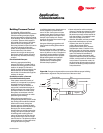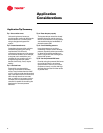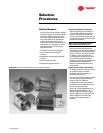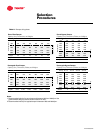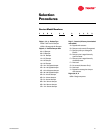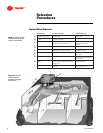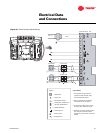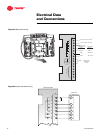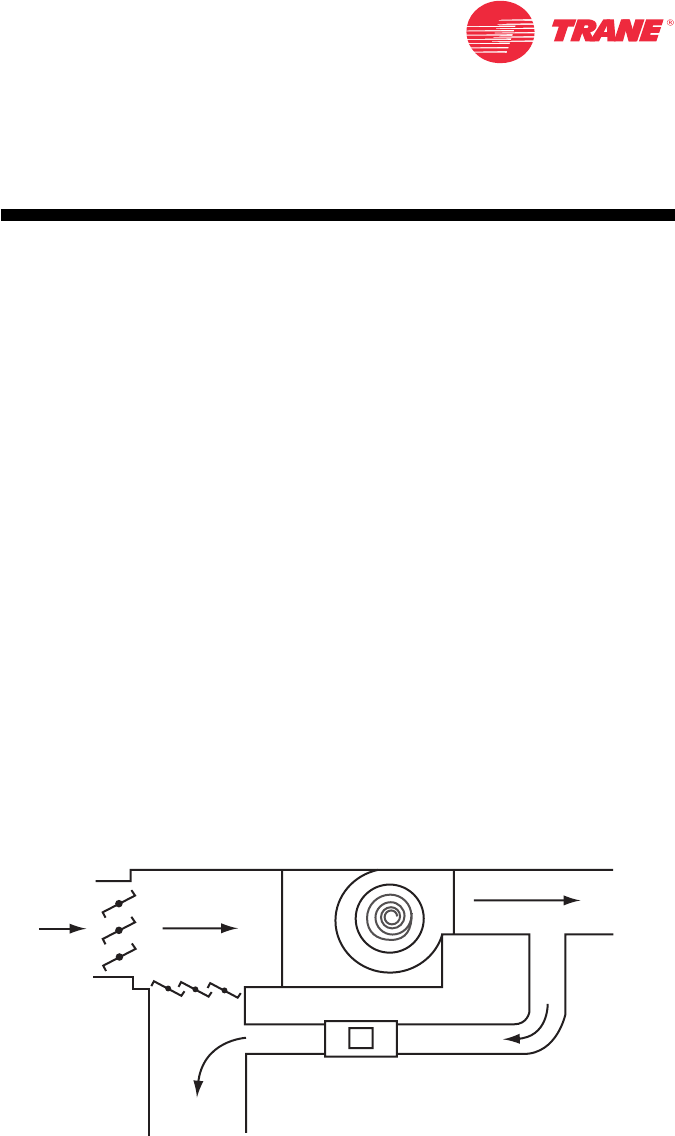
VAV-PRC003-EN 23
Application
Considerations
Building Pressure Control
Comfortable, efficient building
operation requires that the air pressure
inside the building be slightly higher
than the atmospheric pressure outside
of the building. That is, the building is at
a “positive” pressure with respect to
the outside environment. If the indoor
pressure is too low (negative), the
doors may be hard to open and cold air
may leak in through construction
cracks, causing drafts and cold floors.
On the other hand, if the indoor
pressure is too high, the doors may
stand open and the supply air flow to
the zones may decrease, decreasing
comfort.
Fixed Outside Air Dampers
Achieving appropriate building
pressure is simple in a system with a
constant volume supply fan and fixed
outdoor air damper. To maintain a
slightly positive building pressure, size
the exhaust fans to remove slightly
less air than is introduced through the
outdoor air damper.
Outside Economizer or Demand-
Controlled Ventilation Systems
If the system resets the quantity of
outdoor air in response to occupancy
demands (demand-controlled
ventilation), or uses an outdoor air
economizer, undesirable changes in
building pressure may result. As the
quantity of outdoor air intake varies,
the system must exhaust a similar
quantity of air to avoid over or under
pressurizing the building.
When using an economizer in a
changeover-bypass VAV system under
low cooling load conditions (reduced
airflow to the zones), the bypass
damper opens to maintain the static
pressure setpoint and airflow through
the supply fan. As the outside air
damper opens to provide economizer
cooling, the return air damper closes.
In buildings with a ceiling plenum
return, the bypass air dumps into the
ceiling plenum since it can no longer
return to the fan. The plenum pressure
rises and plenum air enters the zones
through the return air grilles.
In buildings that have a ducted return to
the fan, bypass air pressurizes the
return air duct. As the return air duct
pressure rises, the air flows out of the
building through the barometric relief
damper in the rooftop unit. Excess
bypass air flows into the zones through
the return air grilles.
Using the following suggestions will
help maintain building pressurization
control:
• Use an exhaust fan with a modulated
exhaust damper to remove air from the
return air plenum or duct. Energize the
exhaust fan as the outside air damper
opens beyond the minimum position.
Sense building static and maintain
building air pressure at a slightly
positive level by modulating the
exhaust damper position.
• Use an exhaust fan with no exhaust
damper. Energize the exhaust fan when
the outdoor air damper opens beyond
25 percent to remove excess outside air
from the building. This method is used
with some rooftop units and is
effective, affordable, and easy to install.
• Use a back draft damper to prevent
airflow to the return air plenum or
grilles. When bypass airflow
pressurizes the return duct, the back
draft damper closes. Pressure in the
HVAC unit return air inlet rises, causing
the rooftop barometric relief damper to
open. This method is less effective
because the rooftop barometric relief
damper is sized for a portion of the total
airflow, not 100 percent of airflow which
may be seen in economizer mode. As
the economizer drives to the maximum
position, the building usually becomes
over-pressurized.
Figure 29. Changeover bypass with an economizer. Without proper building
pressurization, bypass air may be forced out of the return duct.
Outdoor
Air Damper
Economizer
Fan
Bypass
Return
Damper
Return
Opening



